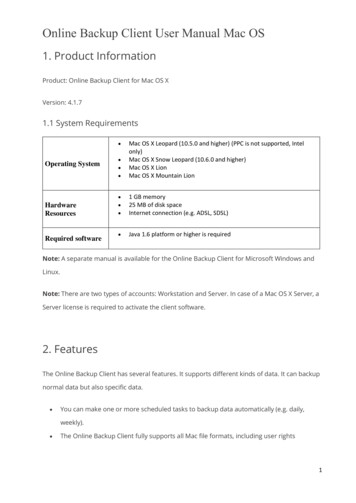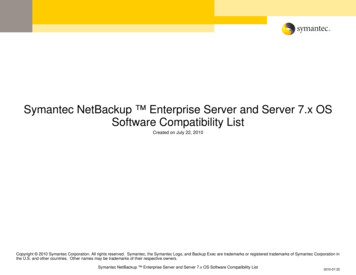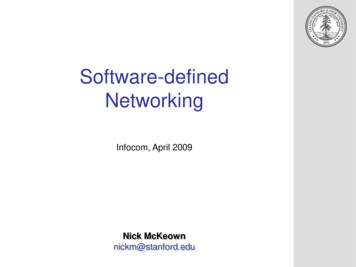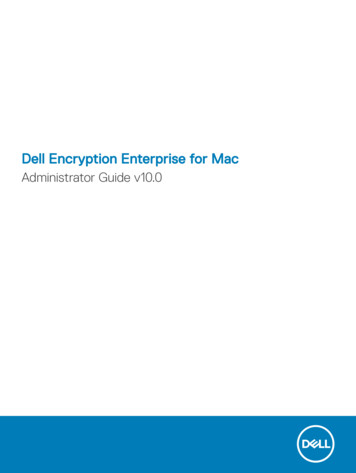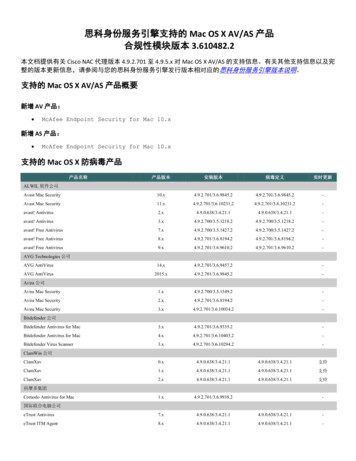
Transcription
Continue
Ge mac 2000 operating manual1 GE Healthcare MAC 2000 ECG Analysis System Operator's Manual Software Version Revision C English 2013 General Electric Company. All Rights Reserved. 2 Publication Information The information in this manual applies only to MAC 2000 Version 1.1. It does not apply to earlier product versions. Due to continuing product innovation, specifications in this manual are subjectto change without notice. MUSE, MAC IT, CASE/CardioSoft, 12SL, and EMR are trademarks owned by GE Medical Systems Information Technologies, Inc., a General Electric Company going to market as GE Healthcare. All other trademarks contained herein are the property of their respective owners. This program uses the SOA4D DPWSCore (C DPWS toolkit) library,Schneider Electric SA, licensed under the BSD License. Part of the software embedded in this product is gsoap software. Portions created by gsoap are Copyright Robert A. van Engelen, Genivia Inc. All Rights Reserved. THE SOFTWARE IN THIS PRODUCT WAS IN PART PROVIDED BY GENIVIA INC AND ANY EXPRESS OR IMPLIED WARRANTIES, INCLUDING, BUT NOTLIMITED TO, THE IMPLIED WARRANTIES OF MERCHANTABILITY AND FITNESS FOR A PARTICULAR PURPOSE ARE DISCLAIMED. IN NO EVENT SHALL THE AUTHOR BE LIABLE FOR ANY DIRECT, INDIRECT, INCIDENTAL, SPECIAL, EXEMPLARY, OR CONSEQUENTIAL DAMAGES (INCLUDING, BUT NOT LIMITED TO, PROCUREMENT OF SUBSTITUTEGOODS OR SERVICES; LOSS OF USE, DATA, OR PROFITS; OR BUSINESS INTERRUPTION) HOWEVER CAUSED AND ON ANY THEORY OF LIABILITY, WHETHER IN CONTRACT, STRICT LIABILITY, OR TORT (INCLUDING NEGLIGENCE OR OTHERWISE) ARISING IN ANYWAY OUT OF THE USE OF THIS SOFTWARE, EVEN IF ADVISED OF THE POSSIBILITYOF SUCH DAMAGE." This product includes software developed by the OpenSSL Project for use in the OpenSSL Toolkit ( This product includes cryptographic software written by Eric Young This product includes software written by Tim Hudson This product complies with the requirements concerning medical devices from the following regulatory bodies: The document partnumber and revision are on each page of the document. The revision identifies the document s update level. The revision history of this document is summarized in the following table. Revision Date Comments A 17 October 2012 Internal Release B 24 April 2013 Customer Release C 15July 2013 Revisions per SPR HCSDM relating to IEC 3rd Edition labeling, and SPR HCSDMTo access other GE Healthcare Diagnostic Cardiology manuals, go to the Common Documentation Library (CDL), located at and click Cardiology. To access Original Equipment Manufacturer (OEM) manuals, go to the device manufacturer's Web site. 2 MAC 2000 ECG Analysis System C 15 July 2013 3 Contents 1 Introduction Intended User of this Product. 9 Indications forUse. 9 Contraindications Prescription Device Statement Regulatory and Safety Information Safety Conventions Safety Hazards Classification of Medical Device Certification Information Recording ECGs During Defibrillation Accuracy of Input Signal Reproduction Modulating Effects in Digital Systems EMI/EMC/RF Safety Information Biocompatibility Legal Notice Supplies andAccessories Responsibility of the Manufacturer Responsibility of the Purchaser/Customer Product and Packaging Information Equipment Identification Product Label Serial Number Format Device Address Label and Rating Plate Product Codes Service Information Service Requirements Warranty Information Additional Assistance Manual Information Manual Purpose DocumentConventions Related Documents Product Overview Product Description Product Specifications Hardware Descriptions Optional Software Features C MAC 2000 ECG Analysis System 3 4 Using the System Navigating the User Interface Resting ECG Power Up Mode Arrhythmia Power Up Mode Main Screen Power Up Mode Stress ECG Power Up Mode Order Manager Power UpMode Setting Up the Equipment Inserting the Battery Connecting the AC Power Connecting the Patient Cable Connecting the Barcode Reader Connecting the LAN Option Connecting the WiFi Option Connecting External Devices (Stress Option) Connecting an Internal Modem Inserting the Paper Turning on the System Configuring the Device Testing the Device Preparing thePatient Preparing the Patient s Skin Electrode Placement Resting ECG Placement Stress 12 Lead Placement Entering Patient Information Entering Patient Information With an Internal Keypad or External Keyboard Entering Patient Information with a Barcode Reader Scanning the Barcode Downloading Patient Demographics Order Manager 4 MAC 2000 ECG Analysis System C 5Communication Media Simple Orders Advanced Order Manager Downloading Orders Selecting and Completing Orders Using the Order Manager Interface Deleting Orders Recording a Resting ECG Hookup Advisor Resting ECGs Recording a Resting ECG ECG Options Post-Acquisition Options Special Considerations Recording ECGs of Pacemaker Patients Recording ECGsDuring Defibrillation Generating a Rhythm Report (Manual Recording) Arrhythmia Mode Recording Recording in Arrhythmia Mode Recording Arrhythmia ECGs Arrhythmia Recording Options Printing Printing an Arrhythmia Report Arrhythmia Printing Options Arrhythmia Codes RR Analysis RR Analysis Mode RR Analysis Setup Acquiring a Recording for an RR Analysis ReportOutput Options Stress Testing Stress Mode Interface Stress Test Information Bar Stress Test Keys Stress Options Conducting Stress Tests Conducting a Stress Test with a Treadmill or Ergometer Conducting a Stress Test with a Master s Step Device C MAC 2000 ECG Analysis System 5 6 11 Managing Internal Storage Importing Records Printing the File Manager DirectoryFinding Records Editing Patient Data Previewing Records Deleting Records Printing Records Transmitting Records Exporting Records Setting Up Export Options Exporting Records System Configuration Basic Setup Resting ECG Setup Arrhythmia Setup Stress ECG Setup Stress ECG Settings Editing Stress Protocols Communication Setup Country Setup Print Setup ReportPatient Setup User Setup Select Setup Import Setup Export Setup Options Setup Service Setup MAC 2000 ECG Analysis System C 7 Date/Time Setup Order Manager Setup RR Analysis Setup PDF File Naming Convention Default Naming Convention Customizing the Naming Convention Retrieving Your Password Exporting the Audit Trail Maintenance Equipment Cleaning andStorage Inspecting the Equipment Cleaning the Device Cleaning, Disinfecting, and Storing ECG Cables and Leadwires Cleaning Guidelines Cleaning and Disinfecting Cables and Leadwires Storing Cables and Leadwires Cleaning, Disinfecting, and Sterilizing Reusable Electrodes Replacing Leadwire Adapters Paper Maintenance Replacing Paper Adjusting the Tray for Paper SizeRemoving the Paper Pack Storing Thermal Paper Battery Maintenance Replacing the Battery Conditioning the Battery Pack Battery Status Indicator Supplies and Accessories Troubleshooting General Troubleshooting Tips Frequently Asked Questions (FAQ) Equipment Problems System Does Not Power Up ECG Data Contains Noise External Stress Equipment does not MovePaper Jams Import/Export/Save Errors SD Card Not Present Cannot Import or Transmit Records via Modem C MAC 2000 ECG Analysis System 7 8 Cannot Transmit Records via LAN Cannot Transmit Records via WiFi Cannot Export to Shared Directories Acquisition/Printer Error Messages Report Errors ACI-TIPI Statement is not Included on Report System Errors A CreatingBarcodes Setting Up the Patient Data Scheme Configuring the Barcode Reader Configuring the Barcode Reader Manually Configuring the Barcode Reader Automatically B Master s Step Data Master's Step Table ST-T Changes C Technical Specifications System Specifications Acquisition, Processing, and Performance Operating Modes, Features, and Options MAC 2000 ECGAnalysis System C 9 Introduction 1 This document describes the MAC 2000 ECG Analysis System, also referred to as the product, system, or device. The document is intended to be used by clinical professionals who use, maintain, and/or troubleshoot the system. Clinical professionals are expected to have a working knowledge of appropriate medical procedures, practices, andterminology used in the treatment of patients. This chapter provides general information required for the proper use of the system and this manual. Familiarize yourself with this information before using the system. Intended User of this Product The MAC 2000 ECG Analysis System is a portable ECG acquisition, analysis, and recording system that is intended for use by trainedoperators in a hospital or medical professional s facility environment, as well as used in clinics, physician offices, outreach centers, or wherever ECG testing is performed. Indications for Use The MAC 2000 ECG Analysis System is a portable device intended to be used by or under the direct supervision of a licensed healthcare practitioner using surface electrodes to acquire,analyze, display, and record information for adult and pediatric populations in a hospital, medical professional s facility, clinics, physician s office or outreach centers. NOTE: Pediatric populations are defined as patients between the ages of 0 and 15 years. The MAC 2000 ECG Analysis System provides the following modes of operation: Resting ECG mode Arrhythmia modeExercise mode for exercise stress testing (optional) RR analysis mode for RR interval analysis (optional) The basic system prints 6 or 12 leads of ECG and is upgradeable to provide software options such as 12-lead ECG measurement and interpretive analysis C MAC 2000 ECG Analysis System 9 10 Introduction Arrhythmia detection is provided for the convenience of automaticdocumentation. Transmission and reception of ECG data to and from a central ECG cardiovascular information system is optional. Contraindications This system is not intended for use in the following manner: During patient transport With high-frequency surgical units As an intra-cardiac application As a vital signs physiological monitor Prescription Device Statement CAUTION:United States federal law restricts this device to sale by or on the order of a physician. Regulatory and Safety Information This section provides information about the safe use and regulatory compliance of this system. Familiarize yourself with this information, and read and understand all instructions before attempting to use this system. The system software is considered medicalsoftware. As such, it was designed and manufactured to the appropriate medical regulations and controls. NOTE: Disregarding the safety information provided in this manual is considered abnormal use of this system and could result in injury, data loss, or a voided warranty. Safety Conventions A Hazard is a source of potential injury to a person, property, or the system. Thismanual uses the terms DANGER, WARNING, CAUTION, and NOTICE to point out hazards and to designate a degree or level of seriousness. Familiarize yourself with the following definitions and their significance. Definitions of Safety Conventions Safety Convention DANGER WARNING Definition Indicates an imminent hazard, which, if not avoided, will result in death or seriousinjury. Indicates a potential hazard or unsafe practice, which, if not avoided, could result in death or serious injury. 10 MAC 2000 ECG Analysis System C 11 Introduction Definitions of Safety Conventions (cont'd.) Safety Convention CAUTION NOTICE Definition Indicates a potential hazard or unsafe practice, which, if not avoided, could result in moderate or minor injury. Indicates apotential hazard or unsafe practice, which, if not avoided, could result in the loss or destruction of property or data. Safety Hazards The following messages apply to the system as a whole. Specific messages may also be provided elsewhere in the manual. WARNING: EQUIPMENT MALFUNCTION Any attempt by unauthorized personnel to service the device could result inequipment malfunction and void the warranty. This equipment contains no user-serviceable parts. Refer servicing to authorized service personnel. WARNING: PATIENT INJURY STRANGULATION Cables present a possible strangulation hazard. To avoid possible strangulation, route all cables away from the patient s throat. Use a short version of cable for pediatric patients.WARNING: PERSONAL INJURY STUMBLING HAZARD Patients can become entangled in the cables and leadwires connected to the device, which could cause the patient to stumble or trip. Route cables and leadwires in a way to avoid creating a stumbling hazard: keep them off the floor, and route leadwires away from the patient s legs and the healthcare provider s work area.WARNING: MAGNETIC AND ELECTRICAL INTERFERENCE Magnetic and electric fields can interfere with the acquisition of ECG readings. Make sure that all peripheral components operated in the vicinity of the device comply with the relevant EMC requirements. X-ray equipment, MRI devices, radio systems (cellular phones) and so forth, are possible sources of interferencebecause they may emit higher levels of electromagnetic radiation. Verify the performance of the system before use. WARNING: EXPLOSION HAZARD Using this device in the presence of anesthetic vapors or liquids can cause explosions. Do not use this device in the presence of anesthetic vapors or liquids. Only persons with adequate training in the correct use of this devicemay use this device C MAC 2000 ECG Analysis System 11 12 Introduction WARNING: EQUIPMENT FAILURE Polarizing electrodes (stainless steel or silver constructed) may cause the electrodes to retain a residual charge after defibrillation. A residual charge blocks acquisition of the ECG signal. Whenever patient defibrillation is a possibility, use non-polarizing electrodes (silversilver chloride construction) for ECG monitoring. WARNING: PERSONAL INJURY Contact with patients during defibrillation can cause serious injury or death. Do not contact patients during defibrillation. Patient signal inputs labeled with the CF and BF symbols with paddles are protected against damage resulting from defibrillation voltages. To ensure proper defibrillator protection,use only GE Healthcare recommended cables and leadwires. Proper placement of defibrillator paddles in relation to the electrodes is required to ensure successful defibrillation. WARNING: INTERPRETATION HAZARD Results of the automated QT analysis are not considered a diagnosis. A qualified physician or cardiologist must review and confirm the measurements andwaveforms recorded by the system. It should be used only as an adjunct to the clinical history, symptoms, and results of other tests. WARNING: INTERPRETATION HAZARD Computerized interpretation is only significant when used in conjunction with clinical findings. A qualified physician must overread all computer-generated tracings. WARNING: POOR SIGNAL QUALITYImproper skin preparation can cause poor signal quality during the ECG recording. Careful skin preparation is the key to an interference-free ECG. WARNING: IMPROPER USE This is a prescriptive device. This equipment is intended for use by or under the direct supervision of a licensed healthcare practitioner. WARNING: EXPLOSION HAZARD Batteries may explode in fires Donot dispose of the battery by fire. Follow local environmental guidelines concerning disposal and recycling. WARNING: ELECTRIC SHOCK HAZARD/SYSTEM MALFUNCTION Liquids inside a device can cause electric shock or system malfunction. Do not allow liquids to enter the device. If liquids enter the device, turn it off and inform your service technician. Do not use the deviceuntil it is checked by a service technician. 12 MAC 2000 ECG Analysis System C 13 Introduction WARNING: ELECTRIC SHOCK Improper connection of this equipment may cause electric shock. To avoid risk of electric shock, this equipment must only be connected to a supply mains with protective earth. NOTE: Follow the instructions provided. Do not position equipment in a waythat makes it difficult to disconnect the device when using an appliance coupler, mains plug, or other separable plug as a means of isolation. Classification of Medical Device The device is classified as follows, according to IEC : Medical Device Classifications Category Type of protection against electrical shock Degree of protection against electrical shock Degree of protectionagainst solids Degree of protection against harmful ingress of liquids (IP20) Degree of safety of application in the presence of flammable anesthetic mixture with air or with oxygen or with nitrous oxide Method(s) of sterilization or disinfection recommended by the manufacturer Mode of operation Classification Class I internally powered equipment Type CF defibrillation-proof appliedpart The IP code for this device is IP20. Protected against solid foreign objects with a diameter of 12.5 mm and greater The object probe, a sphere 12.5 mm diameter, shall not fully penetrate. The jointed test finger 12 mm diameter, 80 mm length, shall have adequate clearance from hazardous parts. The IP code for this device is IP20. Non-protected This device is ordinaryequipment (enclosed equipment without protection against ingress of liquids) Equipment is not suitable for use in the presence of a flammable anesthetic mixture with air or with oxygen or with nitrous oxide Not applicable Continuous operation Certification Information Medical Equipment With respect to electric shock, fire, and mechanical hazards only in accordance with UL , andCAN/CSA C22.2 NO C MAC 2000 ECG Analysis System 13 14 Introduction Recording ECGs During Defibrillation This equipment is protected against the effects of cardiac defibrillator discharge to ensure recovery, as required by test standards. The patient signal input of the acquisition module is defibrillation-proof. Therefore, it is not necessary to remove the ECG electrodes priorto defibrillation. When using stainless steel or silver electrodes, a defibrillator discharge current may cause the electrodes to retain a residual charge causing a polarization or DC offset voltage. This electrode polarization blocks acquisition of the ECG signal. To avoid this condition, if there is a situation where a defibrillation procedure might be necessary, use non-polarizingelectrodes (which do not form a DC offset voltage when subjected to a DC current) such as silver/silver-chloride types. If you use polarizing electrodes, GE Healthcare recommends disconnecting the leadwires from the patient before delivering the shock. Electrode defibrillation recovery is the ability of the electrode to allow the ECG trace to return after defibrillation. GE Healthcarerecommends using non-polarizing disposable electrodes with defibrillation recovery ratings as specified in AAMI EC AAMI EC12 requires that the polarization potential of an electrode pair does not exceed 100 mv 5 seconds after a defibrillation discharge. Refer to the supplies and accessories reference guide for this system for a list of approved electrodes. Accuracy of Input SignalReproduction Overall System Error meets AAMI EC requirements. Overall System Error is between or within 5% or 40 µv, whichever is greater. Frequency Response meets AAMI EC requirements, using testing methods A and D. Frequency response is between or within 10% between 0.67 and 40 Hz and between 0 and -10% for 20 ms, 1.5 mv triangular input. ModulatingEffects in Digital Systems This device uses digital sampling techniques that may produce some variation in amplitudes of Q, R, and/or S waves from one heart beat to the next, which may be particularly noticeable in pediatric recordings. If you observe this phenomenon, be aware that the origin of amplitude variations is not entirely physiological. For measuring voltages of Q, R,and S waves, GE Healthcare advises using the QRS complexes with the largest deflection of the particular waves. EMI/EMC/RF Safety Information This system is designed and tested to comply with applicable regulations regarding EMC and must be installed and put into service according to the EMC information stated in the Electromagnetic Compatibility appendix of the Serviceand/or Operator s manual. Changes or modifications to this system not expressly approved by GE Healthcare could cause EMC issues with this or other equipment. 14 MAC 2000 ECG Analysis System C 15 Introduction Biocompatibility Legal Notice Before installing or using the device or system, be aware of the proximity of known RF sources, such as the following: Radio andTV stations Portable and mobile RF communication devices (cell phones, two-way radios) X-ray, CT, or MRI devices These devices are also possible sources of interference as they may emit higher levels of electromagnetic radiation. WARNING: EQUIPMENT MALFUNCTION/INTERFERENCE Use of portable phones or other radio frequency (RF) emitting equipment near thesystem may cause unexpected or adverse operation. Do not use portable phones or other electronic equipment that may emit radio frequency (RF) near this system. WARNING: EQUIPMENT MALFUNCTION/INTERFERENCE Do not use the equipment or system adjacent to, or stacked with, other equipment. If adjacent or stacked use is necessary, test the equipment or systemto verify normal operation in the configuration in which you are using it. WARNING: ACCESSORIES/COMPONENTS Adding accessories or components, or modifying the medical device or system, may result in increased EMISSIONS or decreased IMMUNITY of the device or system. Use the following resources for more information on EMI/EMC and RF concerns: The Suppliesand Accessories Reference Guide for your system Qualified GE Healthcare or approved third-party personnel The Electromagnetic Compatibility appendix in your system service or operator s manual The parts of the system described in this manual that come into contact with the patient during the intended use, including all accessories, fulfill the biocompatibility requirements ofthe applicable standards. If you have questions in this matter, contact your GE Healthcare representative. GE Healthcare software contains several fields that can be filled in before performing an ECG. Some of these fields are required, while others are optional and left to the user to assess whether they are needed to perform the exam. The field Race is one of these optionalfields. Race has been acknowledged by the medical profession as useful to analyze some pathologies. You should be aware that, in some jurisdictions, the processing of data revealing an individual's racial origin is subject to legal requirements, such as obtaining the patient's prior consent. If you elect to collect this type of data, it is your responsibility to ensure that you comply withall applicable legal requirements C MAC 2000 ECG Analysis System 15 16 Introduction Supplies and Accessories You should use only supplies and accessories that GE Healthcare recommends. For a list of recommendations, refer to the supplies and accessories reference guide for this system Contact GE Healthcare before using anything that is not recommended for thissystem. Responsibility of the Manufacturer GE Healthcare is responsible for the safety, reliability, and performance of hardware supplied by GE Healthcare only if the following conditions are met: Assembly operations, extensions, readjustments, modifications, or repairs are performed by persons authorized by GE Healthcare. The electrical installation of the room where the deviceis used complies with the requirements of the appropriate local, state, and other government regulations. The equipment is used in accordance with the instructions for use. Responsibility of the Purchaser/Customer The customer is responsible for providing appropriate desks, chairs, electrical wall outlets, network connections, and analog phone lines, and for locating any of thesystem components described in this manual in compliance with all local, state, and national codes. Product and Packaging Information This section identifies the following: Hardware labels and their locations on page 16 Symbol Descriptions on page 17 Hardware Label Locations 16 MAC 2000 ECG Analysis System C 17 Introduction Label Descriptions on Hardware andPackaging Item Label Location Description 1 Back of the device Product Label Identifies this device. See Product Label on page 25 for a description of the label contents. 2 Back of the device Device Address Label and Rating Plate It provides regulatory and cautionary information. See Device Address Label and Rating Plate on page 26 for an explanation of the label. 3 Bottomcover of the device The Option Code label. Use the option codes to setup the purchased options in your system. See Options Setup on page 153 for an explanation of the Option Codes. 4 On the shipping package Environmental symbols required for shipping. 5 On the shipping package Battery Shipping Label. FRAGILE Lithium Ion batteries can cause fire if damaged. 6 On theshipping package The shipping label. Symbol Descriptions The following table describes symbols or icons that may be on the device or its packaging. Not all of the symbols defined in the table apply to your device or its packaging. Symbols are used to convey warnings, cautions, prohibitions, mandatory actions, or information. Any symbol on your device or packaging withmarkings in color indicates there may be a danger, warning, or mandatory action. Any symbol on your device or packaging that is in black and white provides additional information or may C MAC 2000 ECG Analysis System 17 18 Introduction indicate a caution. Familiarity with these symbols assists in the use and disposal of the equipment. For equipment symbols not shown,refer to the original equipment manufacturer (OEM) manuals. Symbol Descriptions Symbol Description Catalog or Orderable Part Number Indicates the manufacturer's catalog or part number. Serial Number Indicates the manufacturer's serial number. Batch Code or Lot Number Indicates the manufacturer's batch code or lot number. Date of Manufacture (Year-Month) Indicates theoriginal manufacture date for this device. Manufacturer Indicates the name and address for the manufacturer of this device. It may also include the date it was manufactured. IPxy Authorized Representative in the European Community Indicates the name and address of the authorized representative in the European Community for this device. Rx Only US Federal law restricts thisdevice to sale by or on the order of a physician. 12SL Indicates the device uses the Marquette 12SL ECG Analysis Program to analyze and interpret ECG readings. IP Code (Ingress Protection Rating) Classifies and rates the degree of protection provided against the intrusion of solid objects (such as body parts like hands and fingers, dust, accidental contact), and liquids. The firstnumeral (x) represents the degree of protection against the ingress of solid objects. The second numeral (y) represents the degree of protection against the ingress of liquids. For products with an IPxy rating, see the Classification of Medical Device in this chapter for a description of that rating. Not all products have an IPxy rating. Class II Equipment Identifies equipment that meetsthe safety requirements specified for class II equipment by IEC This device was designed so that it does not require a safety connection to electrical earth (US ground). No single failure results in dangerous voltage becoming exposed and causing an electric shock. This is achieved without relying on an earthed metal casing. 18 MAC 2000 ECG Analysis System C 19 IntroductionSymbol Descriptions (cont'd.) Symbol Description Consult Instructions for Use Consult the operating instructions. Defibrillation-proof Type BF Applied Part Identifies a defibrillation-proof type BF applied part on medical equipment that complies with IEC This device meets the requirements for protection against electric shock for an earth-free (floating) applied part (one intended forcontact with patients). Defibrillation-proof Type CF Applied Part Identifies a defibrillation-proof type CF applied part on medical equipment that complies with IEC This device meets the requirements for protection against electric shock for an earth-free (floating) applied part (one intended for contact with patients) for cardiac application. No User or Field-serviceable Parts Do notopen or disassemble the device for any reason. Protective Earth (ground) Identifies the terminal of a protective earth (ground) electrode or any terminal that is intended for connection to an external conductor for protection against electric shock in case of a fault. Non-ionizing Electromagnetic Radiation Indicates that the equipment emits elevated, potentially hazardous, levels ofnon-ionizing radiation (electromagnetic energy) for diagnosis or treatment. Follow Instructions For Use Read and understand the operator's manual before using the device or product. As a mandatory action sign, this symbol is identified by a blue background and white symbol. CAUTION: SAFETY GROUND PRECAUTION Pulling on the cable can cause the cord to deteriorateresulting in electrical problems. Remove the power cord from the mains source by grasping the plug. DO NOT pull on the cable. CAUTION: CONSULT ACCOMPANYING DOCUMENTS There may be specific warnings or precautions associated with the device that are not otherwise found on the label. Consult the accompanying documentation for more information about safelyusing this device C MAC 2000 ECG Analysis System 19 20 Introduction Symbol Descriptions (cont'd.) Symbol Description CAUTION: ELECTRIC SHOCK Indicates the presence of hazardous energy circuits or electric shock hazards. To reduce the risk of electric shock hazards, do not open this enclosure. Refer servicing to qualified personnel. CAUTION: HOT SURFACE Indicatesthat the marked item may be hot. Take appropriate precautions before touching the item. WARNING: BODILY INJURY Indicates the presence of mechanical parts that can result in pinching, crushing, or other bodily injury. To avoid risk of bodily injury,
Ge mac 2000 operating manual 1 GE Healthcare MAC 2000 ECG Analysis System Operator's Manual Software Version Revision C English 2013 General Electric Company. . Equipment Identification Product Label Serial Number Format Device Address Label and Rating Plate Product Codes Service Information Service Requirements Warranty Information .
